#american songbook series
Explore tagged Tumblr posts
Text
kind of going back to a post i made earlier but assuming bruce is the same in justice league as he is in the new batman adventures (i think he is? but im just going off of how his non-masked character design didn’t really change) but i’d like to think bruce sang tim to sleep. or just sang to him in general. like in the rare moments he gets to relax, he puts on like an old frank sinatra record cause i definitely peg bruce (i could just end the sentence there but i wont) for a jazz standards, great american songbook, tin pan alley, old musical theatre standards, etc. kind of guy. “am i blue” might be his favorite but he also enjoys “the riddle song”, which i recommend the sam cooke version (the song choices here are basically me just projecting, bruce is just like me fr), “moon river”, etc. this is the stuff you’re gonna hear while bruce is reading with a nice cup of coffee, on a rainy day and he even sends sheet music of his favorite arrangements to the musicians he hires for galas. it brings him peace cause this is the kind of music his father showed him so he’s passing it down to tim, like a family heirloom of sorts. bruce is very musically talented, he was definitely a rich kid who took piano lessons and while he’s not the next beethoven, he can play a pretty sweet rendition of “dream a little dream of me”. tim will just sit at the piano and stare and bruce will sit beside him and start playing and he puts tim’s hands on his and oh god give me a sec i’ll start crying. and the thing is bruce is always making music. he has a lovely, melodic, and deep voice and humming is second nature, as well as whistling. sometimes tim asks bruce to sing him to sleep and sometimes bruce is already singing as he puts tim to bed and will finish his song as the boy’s eyes are fluttering shut.
i just got really emo about timmy todd’s relationship w/ bruce in TNBA, they are SOOOO father and son and my favorite iteration of the characters (comic purists are rolling over in their graves but idc). i love scenes when bruce is so father to tim like in “cold comfort” when freeze threatens to kill tim, the surrogate son, as a way of harming bruce and the fear in tim’s eyes is that of a scared kid and he’s not even in robin mode. he’s just scared out of his mind. or scenes when he’s doing homework in the manor living room. or even the very small sentence in the comics where bruce says “tim’s asleep in the east wing” which to me implies bruce puts tim to bed himself.
if i could have eight more seasons of TNBA and at least 150 more issues of the comic series within that universe, i’d be a happy, happy, woman.
okay this was word vomit and made no sense but this is what im contributing for the day.
#batman#bat family#bruce wayne#tim drake#tnba#timmy todd#am i blue is on repeat always#i have a playlist called lullabies i’d sing to my children so sometimes i listen to that and imagine bruce singing to his kids#my headcanons
33 notes
·
View notes
Text
youtube
Happy 80th birthday pop star Rod Stewart.
A bit late with my posts today, was had a busy morning.
Although born in London Rod's father was Scottish and he counts himself as a Scot. Stewart performed in several bands in the 1960s including Python Lee Jackson and The Faces. He worked a series of odd jobs, including working as a grave digger, before his singing career took off
Embarking on a solo career, Maggie May became his first hit single in 1971 Stewart moved to the United States in 1975. The next year, he reached the top of the U.S. charts with "Tonight's the Night" from A Night on the Town. Stewart continued to have a slicker, more pop sound as the decade progressed. He also developed a reputation for his partying lifestyle and for dating numerous actresses and models. With 1978's Blondes Have More Fun, he had another smash hit single with "Do Ya Think I'm Sexy?"
The 1980s proved to be more challenging for Stewart. While 1981's Tonight I'm Yours went platinum, the albums that followed did not fare as well. He ended the decade on a positive note, however. His remake of the Tom Waits song "Downtown Train" in 1989 received a lot of radio play. A few years later, he released Unplugged and Seated (1993), which was recorded at MTV Unplugged concert and featured the hit "Have I Told You Lately."
With his distinctive throaty, almost scratchy-sounding voice, Stewart decided to take on some of the classic songs and make them his own with It Had to be You: The Great American Songbook (2002). He recorded four volumes of the Great American Songbook series, and won his first Grammy Award (best traditional pop vocal album) for Stardust: The Great American Songbook, Volume III in 2004.
At the age of 60, Stewart became a father for seventh time. His son, Alastair Wallace Stewart, was born on November 27, 2005. This was his first child with then fiancée Penny Lancaster. The couple married in 2007 and welcomed a second son, Aiden, in 2011. He also has a daughter, Kimberly, and a son, Sean, from his first wife Alana Stewart and a daughter named Ruby with former girlfriend Kelly Emberg. He also has two children from his marriage to model Rachel Hunter—Renee and Liam. Stewart publicly acknowledged his oldest daughter, Sarah Streeter, in 2013. Streeter was born when Stewart was only 18 years old, and he and the girl's mother had decided to put their baby up for adoption. Stewart and Streeter first met in 2008.
In 2006, Stewart returned to rock music with Still The Same: Great Rock Classics of Our Time. The album reached the top of the pop charts in October of that year. Stewart put down the microphone and picked up a pen to write his 2012 memoir Rod: The Autobiography. The following year, he made an impressive return to songwriting with his album Time. Stewart co-wrote of many of the record's songs as well as serving as a co-producer on the project. Last year he took to Instagram to declare . “I have no desire to retire,” adding I’m fit, have a full head of hair and can run 100 metres in 18 seconds at the age of 79"
Penny Lancaster, said she was planning a series of special events that would last “several weeks” It’s fair to assume they will be joined for the festivities by several of Rod’s eight children, including his and 53-year-old Penny’s sons Alastair, 19, and Aiden, 13, as well as his four daughters and two sons from former relationships: Sarah, 61, Kimberly, 45, Ruby, 37, Renee, 32, Sean, 44, and Liam, 30. Rod’s three grandchildren, Delilah, 13, and Otis and Louie, who are both 19 months, are also likely to be part of the fun. Known affectionately as the “Rodfather” by his extended clan, Rod once told how the age gaps between his children means being “several different fathers” all at once.
But with an upcoming residency at Caesars Palace in Las Vegas, he’s unlikely to give up his snake-hipped moves on stage. “I don’t see any possibility of slowing down anytime soon,” says Rod, whose latest album Swing Fever with Jools Holland was released last February. “As I get older, I only really want to do things that give me great pleasure.”
This year sees him headline Glastonbury certain to be one of the must-see events of the summer. When his Glastonbury appearance was announced in November, Rod told how he was “absolutely thrilled” on Instagram, adding, “After all these years, I’m proud and ready and more than able to take the stage again to pleasure and titillate my friends at Glastonbury in June. I’ll see you there!”
Rod seems to have no worries about the prospect of death, admitting last year, “I’m aware my days are numbered but I’ve got no fear. We have all got to pass on at some point, so we are all in the same basket.” Rod’s relaxed attitude could mean we will see him celebrating his 90th birthday a decade from now. “I am going to enjoy myself for these last few years as much as I can,” he insists. “I say few − probably another 15. I can do that easy mate, easy.” We’re glad to hear it!
After Glastonbury Rod will be jetting off to the US and doing a joint concert with Billy Joel. Rod announced ;“New York! I’m thrilled to announce I’ll be joining my mate [Billy Joel] for a one-night-only performance at the legendary [Yankee Stadium]!” he wrote. “Mark your calendars for Friday, July 18, 2025!”
In his 80th year he also has dozens more concerts penned in for 2025, mainly in the USA.
18 notes
·
View notes
Text
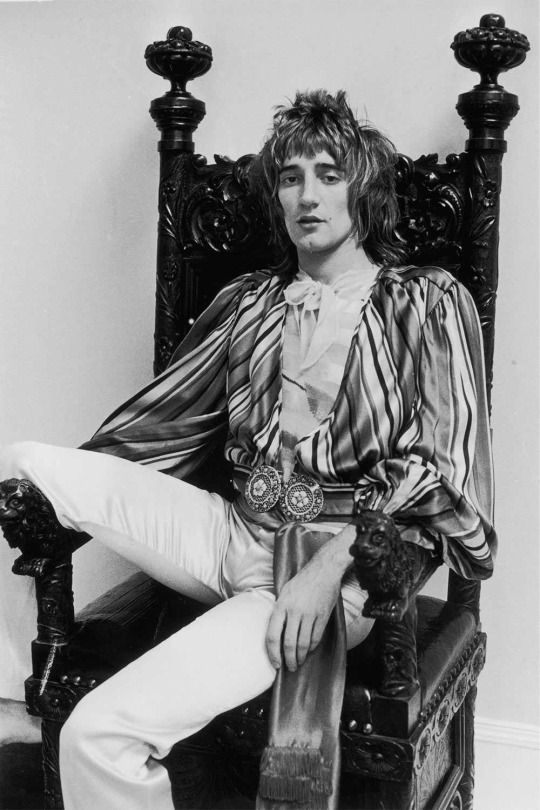
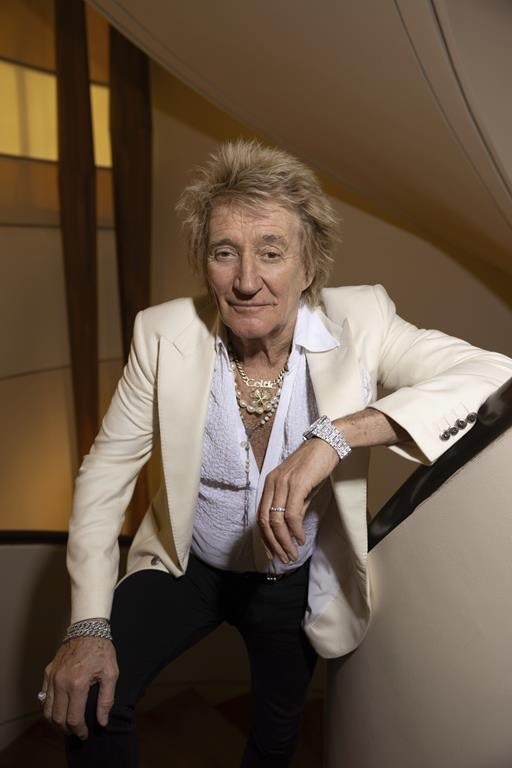
Face(s) the Music: Rod Stewart Turns 80
Forever young in music, Rod Stewart nevertheless has to Face(s) the reality of the clicking clock that dogs us all.
Born Jan. 10, 1945, Stewart turns 80 today.
Blessed with a voice made for rock ‘n’ roll, Stewart put his gift to good work, particularly in the early part of his career, during which he found time to make a string of solo albums - Gasoline Alley and Every Picture Tells a Story, both stone classics, among them - while helping the Small Faces turn big when he and his former Jeff Beck Group mate Ronnie Wood stepped in for Steve Marriott to form Faces.
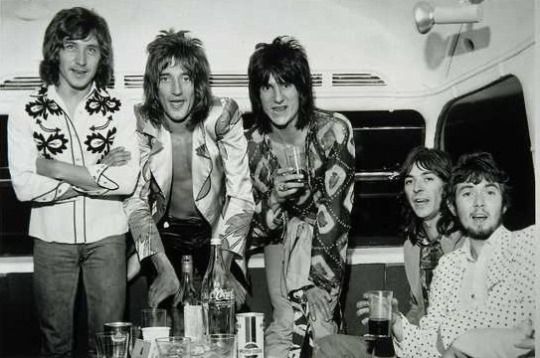
Thus began a half-decade plus of quintessential rock music so indelible it later turned up in the sounds of the Rolling Stones, the Black Crowes and others.
As the 1970s gave way to the 1980s, Stewart, like so many of his generation, followed trends and ceded his status at the vanguard.
He subsequently turned to a series of Great American Songbook, orchestral and Christmas LPs, leaving Stewart with one of the most demarcated careers of the rock era - one with something for everyone and one that’s unlikely to have brought everyone along for the entire ride.

Sound Bites fits that description. But as Stewart enters his ninth decade of life today, the blog remains eternally grateful for his first decade of music from the Beck Group to Faces roughly through to Foot Loose & Fancy Free; music that will always be worthy of celebrating.
1/10/25
3 notes
·
View notes
Text
Broadway Divas Tournament: Round 2B

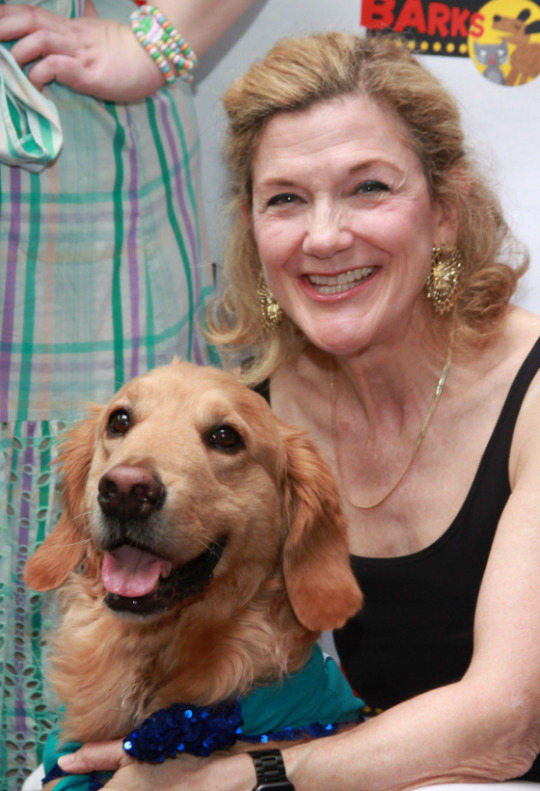
Bernadette Peters (1948) “BERNADETTE PETERS (Sally Durant Plummer) reprises the role she originated in the Kennedy Center production of Follies. Her Broadway credits include A Little Night Music, Gypsy, Annie Get Your Gun, Sunday in the Park with George, Into the Woods, Song & Dance. She has received two Tony Awards, a Golden Globe and two Grammy Awards. She has 20 feature films to her credit, including the upcoming Coming Up Roses, and has recorded six solo albums. Ms. Peters devotes her time to and talents to Broadway Cares/Equity Fights AIDS and Broadway Barks, an annual star-studded dog and cat adoption event, co-founded with Mary Tyler Moore. She is the author/songwriter of two children’s books, Broadway Barks and Stella Is a Star!” – Playbill bio from Follies, September 2011.
Victoria Clark (1959) “VICTORIA CLARK (Sally Durant Plummer. Encores!: Bye, Bye Birdie. Broadway: The Light in the Piazza (Tony, Drama Desk, Outer Critics, Joseph Jefferson Awards), Titanic, How to Succeed…, Cabaret, Urinetown, Guys and Dolls, Sunday in the Park… Carngie Hall: Stephen Sondheim: Opening Doors. Film: Cradle Will Rock. TV: “Law & Order: SVU.” Off-Broadway: The Agony and the Agony by Nicky Silver, Marathon Dancing. Concert: American Songbook Series, Allen Room. Regional: Long Warf, Goodman, Intiman Theaters. Director: 92nd St. Y Lyrics and Lyricsts, Mack Gorden. Faculty, Yale University. www.victoriaclarkonline.com” – Playbill bio from NYCC Encores! Follies, February 8, 2007.
NEW PROPAGANDA AND MEDIA UNDER CUT: ALL POLLS HERE
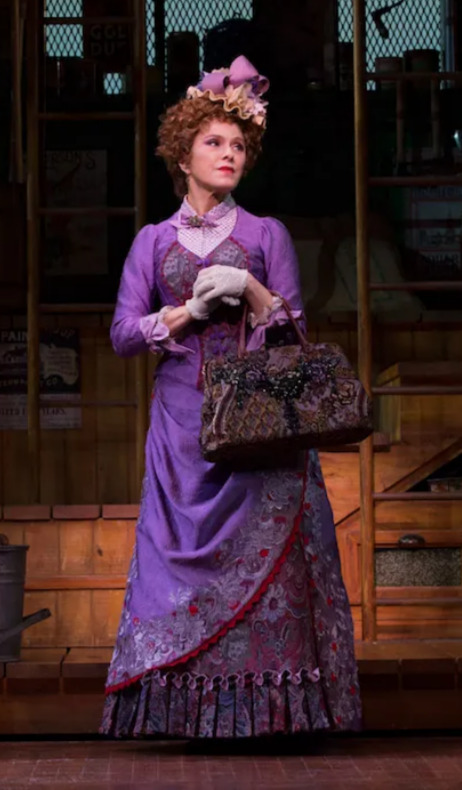

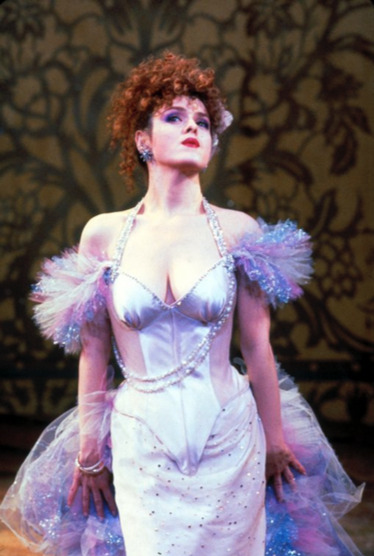
youtube
"Bernadette Peters: Broadway's Hottest GILF. Seventy-six years old and still performing sold-out concerts in gorgeous Bob Mackie gowns with her titties on display. Broadway Barks is the best charity event of the summer, and I dread the day I won't be able to watch her parade around with a bevy of the sweetest shelter animals you've ever seen."
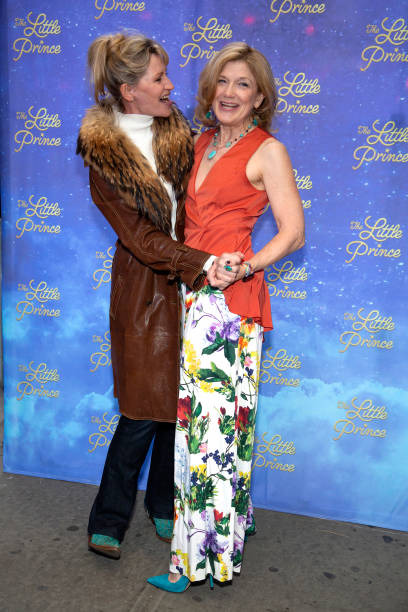


youtube
"Victoria Clark in a blue dress receiving a Tony Award almost twenty years apart. Her 2005 dress was scandalously backless and I *love* it, but her 2023 dress had me swooning. I love this woman, and I know she's doomed, but I still need my adoration on the record."
#broadwaydivastournament#broadway#broadway divas#tournament poll#musical theatre#bernadette peters#victoria clark#round 2b
12 notes
·
View notes
Text
Tony Bennett, the American pop and jazz singer who became the torchbearer for the Great American Songbook during a seven decade career, has died aged 96, his publicist said on Friday.
Bennett was perhaps best known for his 1962 signature song I Left My Heart in San Francisco as well as for staging an astonishing career comeback during the 80s and 90s that delivered him sustained popularity into old age. He won 18 Grammy awards, including a lifetime achievement award in 2001, and has sold more than 50m records worldwide.
In 2020, it was announced that he had been diagnosed with Alzheimer’s in 2016. He wrote on Twitter: “Life is a gift – even with Alzheimer’s.” It was revealed that while his cognitive function was impaired, he was still able to sing a whole range of his repertoire.
Bennett’s ability to perform across the genres of pop, big band and jazz won him plaudits and a conveyor belt of willing collaborators. He proved his relevance in 2014 by collaborating with Lady Gaga on the album Cheek to Cheek, which saw the pair tackle a series of jazz standards. It was a No 1 record in the US and made Bennett the oldest living act to reach the top spot, a record he already held thanks to his 2011 album Duets II.
Born Anthony Dominick Benedetto in 1926 to Italian immigrants, Bennett had an impoverished upbringing in Queens, New York. His father died when he was 10 years old, although he was already singing professionally by that point. As a teenager he became a singing waiter, earning money for the family before enrolling to study music and painting at New York’s School of Industrial Art.
Bennett was drafted into the US army in 1944 to fight in France and Germany during the final year of the second world war. It was an experience that scarred him. “It’s legalised murder,” he said during a 2013 Guardian interview.
But he continued to sing while in Germany as part of the occupying force, and in 1949, after returning home, his singing career could begin properly, first under the name Joe Bari and then as Tony Bennett.
His breakthrough came in 1951 with his first No 1, Because of You. The hits continued throughout the decade with songs such as Blue Velvet, Rags to Riches and material that looked towards the swinging sound of his childhood hero Frank Sinatra. Bennett became a teen idol, and when he married his first wife, Patricia Beech, in 1952, 2,000 female fans dressed in black to “mourn” the event outside the New York ceremony.
In 1962 he reached superstar status thanks to his version of the 1953 song I Left My Heart in San Francisco. The song won Bennett two Grammy awards and became a 20th-century pop standard.
Bennett’s style, however, was already looking outdated as the British invasion swept the US charts, and he struggled for relevance during the 1960s. The following decade saw him face a number of personal problems, including the end of his second marriage and serious drug addiction. Yet two albums recorded with pianist Bill Evans would be key to his later re-emergence as a central figure in US music.
The turning point in his life came when Bennett hired his son Danny to be his manager. Ditching the Las Vegas circuit for New York and reuniting with his early 60s pianist and musical director Ralph Sharon proved to be masterstrokes. His 1986 comeback album, The Art of Excellence, was a hit from which he never looked back. Perfectly Frank (1992) – a tribute to his idol Sinatra – topped the US Billboard’s jazz charts, while 1994’s MTV Unplugged saw Bennett win a Grammy for album of the year. Bennett became a fixture on the late-night TV circuit and collaborated with a host of artists such as kd lang, Amy Winehouse, Queen Latifah and Diana Krall, which helped maintain his relevance with younger artists. His 2006 album, Duets: An American Classic, featured appearances from Paul McCartney, Elton John and George Michael.
Bennett was drafted into the US army in 1944 to fight in France and Germany during the final year of the second world war. It was an experience that scarred him. “It’s legalised murder,” he said during a 2013 Guardian interview.
But he continued to sing while in Germany as part of the occupying force, and in 1949, after returning home, his singing career could begin properly, first under the name Joe Bari and then as Tony Bennett.
His breakthrough came in 1951 with his first No 1, Because of You. The hits continued throughout the decade with songs such as Blue Velvet, Rags to Riches and material that looked towards the swinging sound of his childhood hero Frank Sinatra. Bennett became a teen idol, and when he married his first wife, Patricia Beech, in 1952, 2,000 female fans dressed in black to “mourn” the event outside the New York ceremony.
In 1962 he reached superstar status thanks to his version of the 1953 song I Left My Heart in San Francisco. The song won Bennett two Grammy awards and became a 20th-century pop standard.
Bennett’s style, however, was already looking outdated as the British invasion swept the US charts, and he struggled for relevance during the 1960s. The following decade saw him face a number of personal problems, including the end of his second marriage and serious drug addiction. Yet two albums recorded with pianist Bill Evans would be key to his later re-emergence as a central figure in US music.
The turning point in his life came when Bennett hired his son Danny to be his manager. Ditching the Las Vegas circuit for New York and reuniting with his early 60s pianist and musical director Ralph Sharon proved to be masterstrokes. His 1986 comeback album, The Art of Excellence, was a hit from which he never looked back. Perfectly Frank (1992) – a tribute to his idol Sinatra – topped the US Billboard’s jazz charts, while 1994’s MTV Unplugged saw Bennett win a Grammy for album of the year. Bennett became a fixture on the late-night TV circuit and collaborated with a host of artists such as kd lang, Amy Winehouse, Queen Latifah and Diana Krall, which helped maintain his relevance with younger artists. His 2006 album, Duets: An American Classic, featured appearances from Paul McCartney, Elton John and George Michael.
Singing was not Bennett’s only artistic pursuit. His paintings, produced under his birth name, are on display at the Smithsonian Institution and the Butler Institute of American Art. In 2001, he founded the Frank Sinatra School of the Arts in Queens, New York which offers qualifications in fine art, dance, vocal and instrumental music, drama and film.
A lifelong Democrat, Bennett was also a supporter of the civil rights movement who participated in the 1965 Selma to Montgomery marches and refused to perform in apartheid-era South Africa.
Bennett remained determined to perform into his later life. Shortly after his 90th birthday he told the New York Times: “I could have retired 16 years ago, but I just love what I’m doing.”
41 notes
·
View notes
Text
my mother raised me on listening to the series of Rod Stewart sings the great american songbook so it was a while before i even learned that he was a rock guy first. but to me he's a crooner first!
#1001 albums#i'm liking this gasoline alley though#i should dig out those albums#i adored them#and the features on them!#i remember queen latifah did a duet with him. iconic.
13 notes
·
View notes
Text
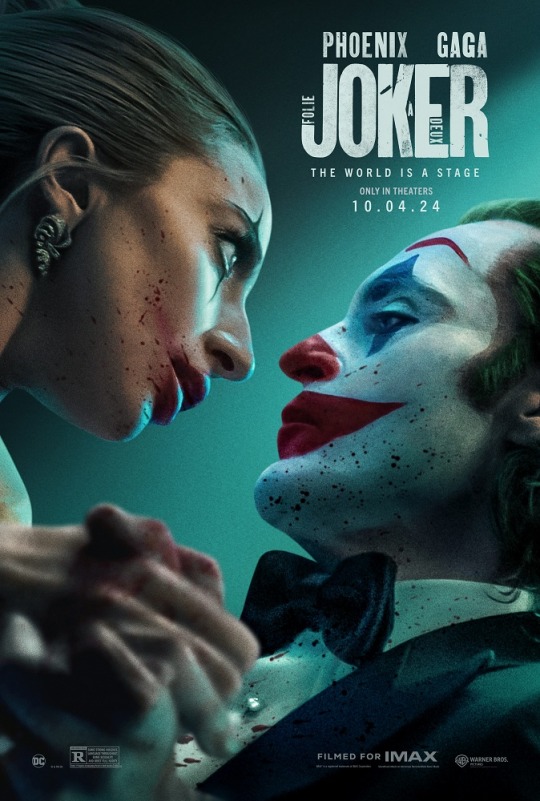
JOKER: FOLIE Á DEUX (2024)
Starring Joaquin Phoenix, Lady Gaga, Brendan Gleeson, Catherine Keener, Zazie Beetz, Harry Lawtey, Steve Coogan, Ken Leung, Bill Smitrovich, Jacob Lofland, Leigh Gill, Sharon Washington, Gattlin Griffith, Mac Brandt, Tim Dillon, George Carroll, Mike Houston, John Lacy, Sam Wren Vincent, Troy Metcalf, Jimmy Walker Jr., G.L. McQueary and Brian Donahue.
Screenplay by Scott Silver & Todd Phillips.
Directed by Todd Phillips.
Distributed by Warner Bros. Pictures. 138 minutes. Rated R.
I know I’m kind of in the minority on this point, but I can’t even start to tell you how much I hated Todd Phillips’ 2019 movie Joker.
Five years later, here comes the follow-up, and it’s like Phillips said to himself: Hmm… how can we make this story even more annoying? I know! Let’s make it a musical. Better yet, let’s not even completely commit fully to the genre and make it sort of a stealth musical. The cast will start singing inappropriately, but mostly in a relatively subdued manner. None of the other trappings of the style – the dancing, the frenetic movement, the wild visuals, the boisterous chorus lines – need to be used. And we won’t even write our own music, we’ll just dust off some 60s and 70s pop songs and overly familiar standards from the Great American Songbook.
On the plus side, this time around, I don’t think I’ll be all that lonely in hating Joker: Folie à Deux. Because I really, really did hate it. If possible, this sequel is even more unbearable than the original. Imagine that.
I can’t imagine anyone actually liking Joker: Folie à Deux – then again, I felt that way about the first one, too, so maybe I’m not the best judge. Nonetheless, early buzz on the sequel seems pretty negative, so hopefully it’s not just me.
I take no joy in saying that. I actually was rather looking forward to the original Joker movie until I saw it. Because the truth is, Batman is a relatively dull superhero, but the one thing he always did have going for himself were the best villains. And a movie about arguably the most interesting of Batman’s villains could be amazing.
It’s just not this series.
At least the first Joker had something of a storyline. Granted, it was a pretty blatant rip-off of Martin Scorsese’s 1983 cult favorite The King of Comedy – they even cast that film’s star Robert De Niro in a major supporting role to make the connection even more obvious – but it was something of a plot.
Joker: Folie à Deux, on the other hand, is nearly two and a half hours (!!!) of Arthur Fleck (Joaquin Phoenix) being psychoanalyzed and mistreated in an insane asylum. (Like we didn’t know he was mentally deranged from the first time he appeared on screen in the first film.) Then it switches to being a courtroom drama about Arthur’s criminal trial for the mayhem he committed in the first film, although it plays out like an episode of Law & Order: Super Villains Unit.
While in the asylum, he meets his one true love, Lee Quinzel, who becomes Harley Quinn. (Of course, in the first Joker movie, Arthur imagined Zazie Beetz’ character – who reappears here as a witness for the prosecution – was his one true love, so Arthur isn’t too reliable in matters of the heart.) Lady Gaga is okay, if way too subdued, as the future Harley. She certainly won’t make anyone forget Margot Robbie’s powerhouse performances in the same role.
My biggest problem with Joker: Folie à Deux is the same as my problem with the first film. In both of these films, the Joker is played as a sad, pathetic, miserable loser who has life take a massive dump on him throughout the entire running time. Is this really supposed to be the guy who is going to be Batman’s greatest nemesis?
At least in the original film, Arthur eventually snapped and went on a violent killing spree, which was not a great, moral or relatable storyline, but at least he did something. In Folie à Deux, any violence or mayhem which he commits is mostly done in fantasy sequences, which just makes him seem even sadder and more impotent in real life.
After it was over, someone who apparently enjoyed the movie much more than I did tried to convince me that Folie à Deux is a movie that shows the depths a man will go to for love. However, his relationship with Lee is so dysfunctional, so toxic, so driven by mania, that it’s hard to root for a happy ever after for these two crazy kids. They – and the world – are probably better off with them separate. We know that is not the case from the comics, although the ending does put that in doubt.
As I said in the original review five years ago, Joker has been known to inspire many complicated emotional reactions. Pity has never really been one of them.
However, even more than I pitied the Joker in these two movies, I mostly pity myself because I have now wasted about four and a half hours of my life watching this sad saga.
Jay S. Jacobs
Copyright ©2024 PopEntertainment.com. All rights reserved. Posted: October 3, 2024.
youtube
3 notes
·
View notes
Text

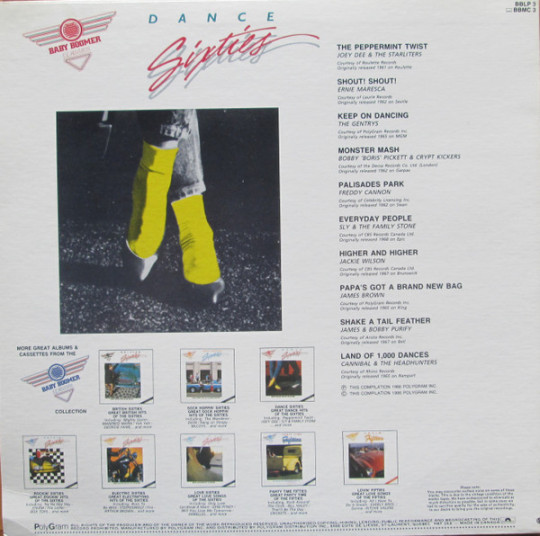
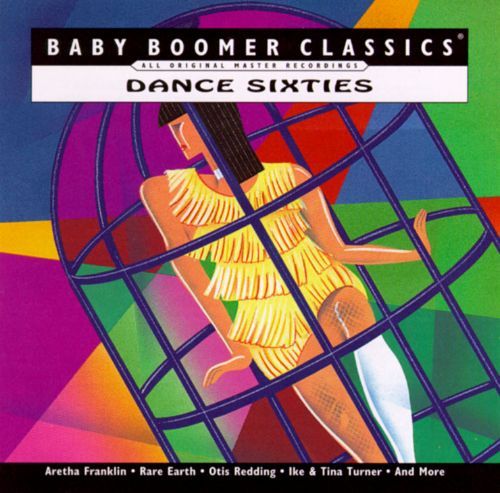
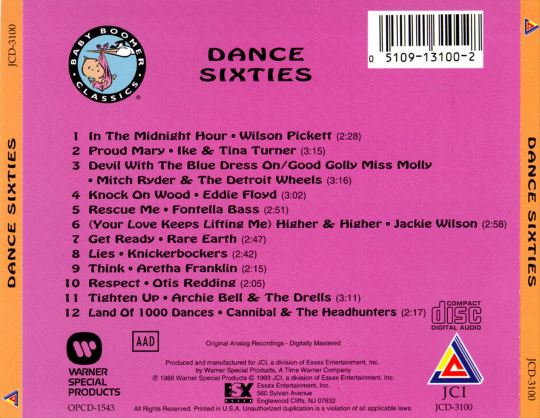
Today's compilation:
Baby Boomer Classics: Dance Sixties 1985/1988 R&B / Soul / Rock & Roll
Marking my return to my glorious music blog with a whole batch of feet-movin' classics from yesteryear. Here we have Dance Sixties, a dispatch from the California-based JCI label's Baby Boomer Classics series that gives us a brief glimpse into some old, uptempo gold.
But before we get right into it, there's a couple things that need addressing: firstly, there is more than one iteration of this comp that's floating around out there. The original one came out in 1985, and then a newer version surfaced a few years afterwards that replaced a couple tracks. And what I have here is a combination of both of those albums.
And second—and I don't know how on earth I keep running into such fundamental errors with releases like these—this album purports to be comprised of nothing but 60s dance hits, but that's not entirely true. For example, Ike & Tina Turner's Grammy-winning cover of Creedence Clearwater Revival's "Proud Mary" is not a 60s song. It was recorded and released in 1970. It's a terrifically infectious R&B number and all, but it really has no business being on this release.
Speaking of covers, though, this overall selection is pretty interesting, because a whole bunch of these songs were actually made more famous by other people. And in a couple of cases, those artists who made those songs more famous are on here, but the songs that they supply are different hits.
For instance, this album's excellently noisy closer, Cannibal & The Headhunters' #30 US hit, "Land of 1000 Dances"—which is actually a cover in and of itself of Chris Kenner's 1962 version—was made far more famous by Wilson Pickett. But Wilson Pickett's offering here is another one of his biggest hits, "In the Midnight Hour," which happens to kick off this whole Dance Sixties affair.
And the same goes for Aretha Franklin too. It would've been perfectly understandable for her cover of Otis Redding's "Respect" to be on here, as it's one of the single-most important entries in the American songbook, with both its soundtracking of the civil rights movement throughout the late 60s and its assertive reversal of traditional gender roles in its lyrics; but it's Otis' original that appears on here, while Aretha's also sublime "Think" is supplied as well.
And to the untrained ear, one might think that there's another Aretha song on here too: "Rescue Me," which was by the unfairly blackballed Fontella Bass, but has been assumed by many over the years to have been an Aretha song itself, so much so, that Aretha actually performed it in an ad for Pizza Hut back in the day as "Deliver Me" 😭.
How can you not get a kick out of this silly shit?!:
youtube
And another song that people often confuse for being by a different act is The Knickerbockers' "Lies," a mid-60s burner by a garage band from New Jersey that sounds an awful lot like The Beatles!
OK, a couple more things before I sign off here: it's ultimately hard for me to pick a favorite among all of these tunes, but I think it might have to be The Spencer Davis Group's "I'm a Man," which has the same name as a song by Bo Diddley that was also famously covered by The Yardbirds, but is actually a completely different composition. In truth, the star of the Spencer Davis Group was not Spencer Davis himself—the only real reason why they decided to go with that name in the first place seems to be because no one else in the band was keen on doing interviews and press junkets, and it was assumed that the group's namesake would naturally have to be the one to fulfill those duties 😅. Undoubtedly, the one who shone most brightly in this band was a teenaged Steve Winwood, who possessed a distinctly powerful voice and was a total monster on the Hammond organ too. And on "I'm a Man," which comes with a whole lot of different bits of percussive rhythms and howling backing vocals, Steve manages to energetically strut it all.
And for a tune that's a bit more obscure than a lot of the rest of these, there's one-hit wonder Pacific Gas & Electric's "Are You Ready," a psychedelic soul-rock groover that was criminally left off of the 1988 version of this comp. This tune, like Ike & Tina Turner's "Proud Mary," was also released as a single in 1970, but because it originated from PG&E's self-titled album from the year prior, I'm willing to not lodge a complaint about it. If you love a song with a good, extended guitar solo that uses a delayed echo in one of its channels, then boy, is this #14 US hit worth a listen for you! Really fantastic stuff.
Happy to be back with a high-quality crop of songs such as this. I don't know what the rest of this big series has in store, but if it's anything like this particular release, then I'm definitely looking forward to it. An album where I don't even get to fawn over a personal favorite like Jackie Wilson's "Higher & Higher" should give you a good indication of just how top-notch this whole thing really is. A very well-put-together compilation, even if not every song on it is actually from the decade that it claims to represent 😅.
Highlights:
Wilson Pickett - "In the Midnight Hour" Ike & Tina Turner - "Proud Mary" Mitch Ryder & The Detroit Wheels - "Devil With the Blue Dress On / Good Golly Miss Molly" Eddie Floyd - "Knock On Wood" Fontella Bass - "Rescue Me" Jackie Wilson - "(Your Love Keeps Lifting Me) Higher & Higher" Rare Earth - "Get Ready" Spencer Davis Group - "I'm a Man" Knickerbockers - "Lies" Aretha Franklin - "Think" Otis Redding - "Respect" Pacific Gas & Electric - "Are You Ready" Archie Bell & The Drells - "Tighten Up" Cannibal & The Headhunters - "Land of 1000 Dances"
#r&b#r & b#rhythm & blues#rhythm and blues#soul#soul music#rock & roll#rock and roll#rock#classic rock#oldies#music#60s#60s music#60's#60's music#70s#70s music#70's#70's music#Youtube
3 notes
·
View notes
Text
346: Various Artists // What Now, People? 2
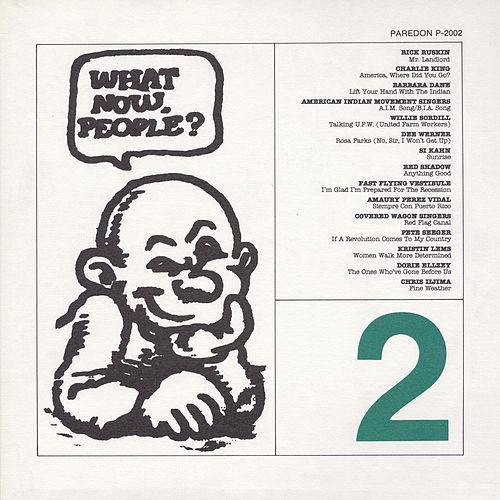
What Now, People? 2 Various Artists 1977, Paredon
Paredon was an activist record label founded in 1969 that specialized in protest music, largely American acoustic folk with a good helping of releases by international leftist artists. Inspired by the Cuban Revolution and the model of “People’s Singers” like Joe Hill and Pete Seeger, Paredon put out about 50 releases over their 20ish years in operation. The mid-‘70s compilation series What Now, People? (three volumes between 1976 and 1977) was a musical magazine intended to stimulate development of new protest songs for marches, rallies, labour meetings, etc. by providing complete lyrics, chords, and commentary from contemporary folk singers.
The back of the included booklet asks the purchaser to mail back a “political record review” in the form of a questionnaire. It’s a little late for me to field questions 7 through 9, which concern suggesting record stores and radical organizations who might be interested in carrying Paredon stock, but I’ll do my best with the others.
youtube
1. HOW DID YOU FIRST HEAR ABOUT THIS RECORD?
I found a copy of it in the used section of Phonopolis Records, on Rue Bernard, Mile End, Montreal, Quebec in 2021.
2. WHAT WAS YOUR REACTION TO IT POLITICALLY?
I have always liked the “musical magazine” concept, and the notion of making a body of political songs accessible for people to not only listen to but learn how to play themselves (in the manner of The IWW Songbook) is very cool. On a level of pure politics, it’s hard to disagree with the lyrics’ notions that America must become more egalitarian or it will consume itself morally, environmentally, socially, and psychically. (Thankfully this is no longer a problem today.)
I’m not sure the emphasis on ‘60s-style folk was the strongest tact however. The late ‘70s was an era with no shortage of powerful protest music, but this collection largely eschews R&B and even rock (with apologies to Red Shadows’ limp Chuck Berry rewrite “Anything Good”). While the veteran Seeger’s “If a Revolution Comes to My Country” grapples with both the promise and challenge of political change in an immediate way, the efforts of the lesser-knowns mostly feel like they’re roleplaying as the firebrands of a prior era. The most genuinely “revolutionary” sounding pieces are those that come from outside the coffee shop scene, like Cuban Amaury Pérez Vidal’s ode to Puerto Rican independence “Siempre con Puerto Rico” and Dakota Sioux activist Floyd Westerman’s “B.I.A.” song—perhaps because these artists had much more direct connections with revolutionary political movements than most of the whites here.
3. WHAT DID YOU THINK OF THE BOOKLET?
Fantastic. It’s a great and in some ways inspiring souvenir of the era, and I wish more artists would include the chords and lyrics to their songs.
4. HOW HAVE YOU USED THIS RECORD?
I don’t believe that What Now, People? 2 would be of much use at a contemporary organizing meeting or rally, so largely for scholarly interest; for enjoyment of some pretty folk numbers (Dee Werner, Dorie Ellzey); for yet another reminder of the circularity of political struggle.
youtube
5. WHAT OTHER RECORDS SHOULD BE MADE?
Paredon’s focus on bringing (at the time) difficult to find foreign artists to American audiences will stand as their greatest aesthetic achievement, and I wouldn’t have been upset if there were more. Perhaps some more overtures to Black activists and musicians might’ve led to a more dynamic result with this record in particular.
6. WHAT NOW, PEOPLE?
There is no shortage of protests to go to, letters to write, plans to make. Hopefully we’ll see each other out there, with songs in our hearts.
346/365
#pete seeger#paredon#smithsonian folkways#amaury perez#r. crumb#floyd westerman#protest music#musical magazine#american indian movement#music review#vinyl record#'70s music#folk music#protest songs
2 notes
·
View notes
Text
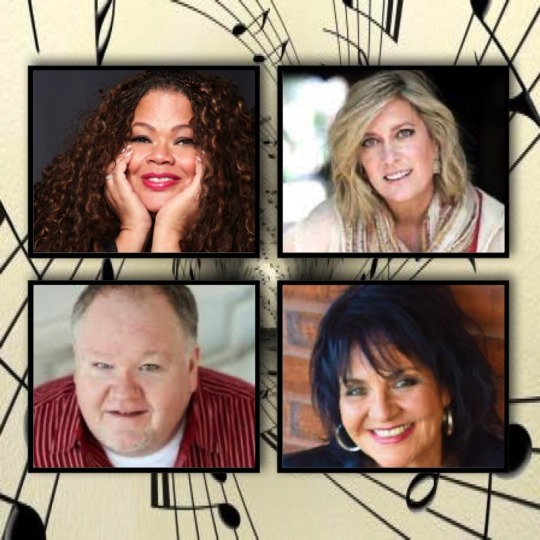
Music deserves to be the mandatory second language of all schools in the world.– Paul Carvel, Belgian Author
I think we all agree it should be but it's not!
We begin a new broadcast series for Cabaret Month, spotlighting the educational outreach programs in the Cabaret community. This week we interview Natalie Douglas, Education Director for The Mabel Mercer Foundation. In upcoming weeks we will chat with: Carolyn Montgomery, Executive Director of the American Songbook Association Inc.., Lennie Watts, Artistic Director of Singnasium & Lina Koutrakos, Director of the Recording Studio Workshop.
More info on the broadcast at www.oldisnew.org Check us out!
#EverythingOldIsNewAgainRadioShow#45thYear#PopStandards#GreatAmericanSongbook#Jazz#Showtunes#Cabaret#broadway
3 notes
·
View notes
Text
Tony Bennett, Jazzy Crooner of the American Songbook, Is Dead at 96
From his initial success at the Paramount in Times Square through his generation-spanning duets, his career was remarkable for both its longevity and its consistency.
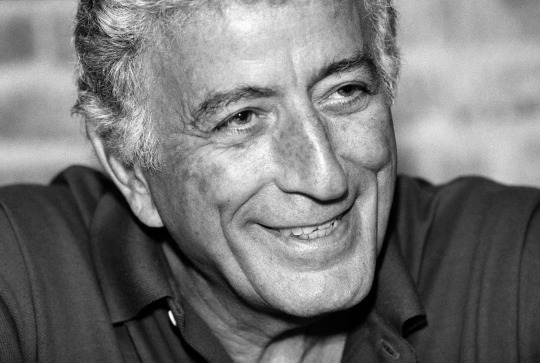
By Bruce Weber
July 21, 2023
Tony Bennett, a singer whose melodic clarity, jazz-influenced phrasing, audience-embracing persona and warm, deceptively simple interpretations of musical standards helped spread the American songbook around the world and won him generations of fans, died on Friday at his home of many decades in Manhattan. He was 96.
His publicist, Sylvia Weiner, announced his death.
Mr. Bennett learned he had Alzheimer’s disease in 2016, his wife, Susan Benedetto, told AARP The Magazine in February 2021. But he continued to perform and record despite his illness; his last public performance was in August 2021, when he appeared with Lady Gaga at Radio City Music Hall in a show titled “One Last Time.”
Mr. Bennett’s career of more than 70 years was remarkable not only for its longevity, but also for its consistency. In hundreds of concerts and club dates and more than 150 recordings, he devoted himself to preserving the classic American popular song, as written by Cole Porter, the Gershwins, Duke Ellington, Rodgers and Hammerstein and others.
From his initial success as a jazzy crooner who wowed audiences at the Paramount in Times Square in the early 1950s, through his late-in-life duets with younger singers gleaned from a range of genres and generations — most notably Lady Gaga, with whom he recorded albums in 2014 and 2021 and toured in 2015 — he was an active promoter of both songwriting and entertaining as timeless, noble pursuits.
Mr. Bennett stubbornly resisted record producers who urged gimmick songs on him, or, in the 1960s and early ’70s, who were sure that rock ’n’ roll had relegated the music he preferred to a dusty bin perused only by a dwindling population of the elderly and nostalgic.
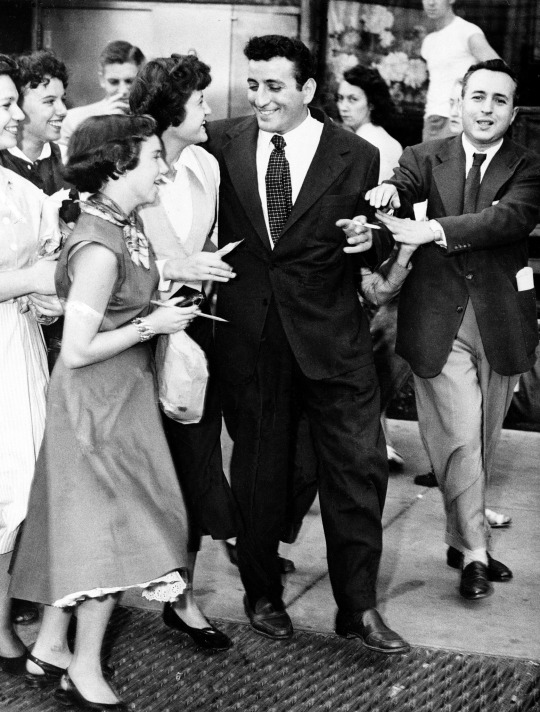
Instead, he followed in the musical path of the greatest American pop singers of the 20th century — Louis Armstrong, Bing Crosby, Judy Garland, Billie Holiday, Frank Sinatra — and carried the torch for them into the 21st. He reached the height of stardom in 1962 with a celebrated concert at Carnegie Hall and the release of his signature song, “I Left My Heart in San Francisco.” And though he saw his popularity wane with the onset of rock and his career went through a trough in the 1970s, when professional difficulties were exacerbated by a failing marriage and drug problems, he was, in the end, more than vindicated in his musical judgment.
“I wanted to sing the great songs, songs that I felt really mattered to people,” he said in “The Good Life” (1998), an autobiography written with Will Friedwald.
It’s hard to overstate Mr. Bennett’s lasting appeal. He was still singing “San Francisco” — which led many people to think he was a native of that city, though he was actually a through-and-through New Yorker — more than half a century later. He sang on Ed Sullivan’s show and David Letterman’s. He sang with Rosemary Clooney when she was in her 20s, and Celine Dion when she was in her 20s.
He made his film debut in 1966, in a critically reviled Hollywood story, “The Oscar,” playing a man betrayed by an old friend. And though he did not pursue an acting career, decades later he was playing himself in movies like the Robert De Niro-Billy Crystal gangster comedy “Analyze This” and the Jim Carrey vehicle “Bruce Almighty.” He was 64 when he appeared as a cartoon version of himself on “The Simpsons.” He was 82 when he appeared on the HBO series “Entourage,” performing one of his trademark songs, “The Good Life.”
A lifelong liberal Democrat, Mr. Bennett participated in the Selma-to-Montgomery civil rights march in 1965, and, along with Harry Belafonte, Sammy Davis Jr. and others, performed at the Stars for Freedom rally on the City of St. Jude campus on the outskirts of Montgomery on March 24, the night before the Rev. Dr. Martin Luther King Jr. delivered the address that came to be known as the “How Long? Not Long” speech. At the conclusion of the march, Viola Liuzzo, a volunteer from Michigan, drove Mr. Bennett to the airport; she was murdered later that day by members of the Ku Klux Klan.
Mr. Bennett also performed for Nelson Mandela, then the president of South Africa, during his state visit to England in 1996. He sang at the White House for John F. Kennedy and Bill Clinton, and at Buckingham Palace at Queen Elizabeth II’s 50th anniversary jubilee.
An ‘Elusive’ Voice
He won his first two Grammy Awards, for “San Francisco,” in 1963, and his last, for the album “Love for Sale,” with Lady Gaga, last year. Altogether there were 20 of them, including, in 2001, a lifetime achievement award. By some estimates, he sold more than 60 million records.
The talent that spawned this success and popularity was not so easy to define. Neither a fluid singer nor an especially powerful one, he did not have the mellifluous timbre of Crosby or the rakish swing of Sinatra. If Armstrong’s tone was distinctively gravelly, Mr. Bennett’s wasn’t quite; “sandy” was more like it. Almost no one denied that his voice was appealing, but critics strove mightily to describe it, and then to justify its appeal.
“The voice that is the basic tool of Mr. Bennett’s trade is small, thin and somewhat hoarse,” John S. Wilson wrote in The New York Times in 1962. “But he uses it shrewdly and with a skillful lack of pretension.”
In a 1974 profile, Whitney Balliett, the longtime jazz critic for The New Yorker, called Mr. Bennett “an elusive singer.”
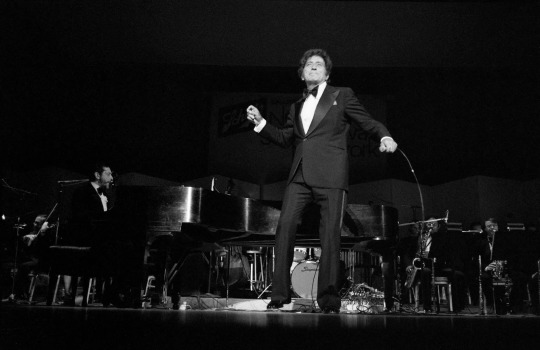
“He can be a belter who reaches rocking fortissimos,” Mr. Balliett wrote. “He drives a ballad as intensely and intimately as Sinatra. He can be a lilting, glancing jazz singer. He can be a low-key, searching supper-club performer.” But, he added, “Bennett’s voice binds all his vocal selves together.”
Most simply, perhaps, the composer and critic Alec Wilder said about Mr. Bennett’s voice, “There is a quality about it that lets you in.”
Indeed, what many listeners (including the critics) discovered about Mr. Bennett, and what they responded to, was something intangible: the care with which he treated both the song and the audience.
He had a storyteller’s grace with a lyric, a jazzman’s sureness with a melody, and in his finest performances he delivered them with a party giver’s welcome, a palpable and infectious affability. In his presentation, the songs he loved and sang — “Just in Time,” “The Best Is Yet to Come,” “Rags to Riches” and “I Wanna Be Around,” to name a handful of his emblematic hits — became engaging, life-embracing parables.
Frank Sinatra, whom Mr. Bennett counted as a mentor and friend, once put it another way.
“For my money, Tony Bennett is the best singer in the business,” he told Life magazine in 1965. “He excites me when I watch him. He moves me. He’s the singer who gets across what the composer has in mind, and probably a little more.”
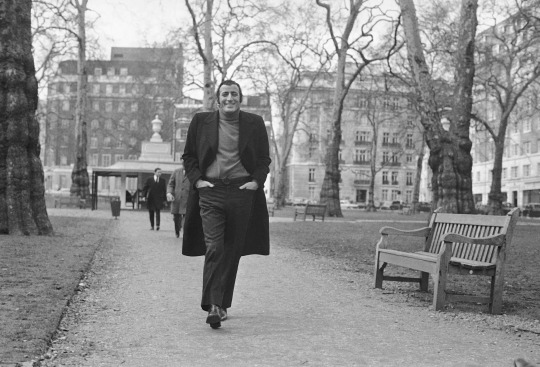
Mr. Bennett passed through life with as unscathed a public image as it is possible for a celebrity to have. Finding even mild criticism of him in reviews and interviews is no mean feat, and even his outspoken liberalism generally failed to attract vitriol from the right. (An exception was his call, after the drug-related deaths of Michael Jackson, Amy Winehouse and Whitney Houston, for the legalization of drugs, a view loudly denounced by William J. Bennett, the former drug czar, among others.)
With the possible exception of his former wives, everyone, it seemed, loved Tony Bennett. Skeptical journalists would occasionally try to pierce what they perceived as his perfect veneer, but they generally discovered that there wasn’t much to pierce.
“Bennett is outrageous,” Simon Hattenstone, a reporter for The Guardian, wrote in 2002. “He mythologizes himself, name-drops every time he opens his mouth, directs you to his altruism, is self-congratulatory to the point of indecency. He should be intolerable, but he’s one of the sweetest, most humble men I’ve ever met.”
Son of Queens
Anthony Dominick Benedetto was born on Aug. 3, 1926, in the Long Island City neighborhood of Queens, and grew up in that borough in working-class Astoria. His father, Giovanni, had emigrated from Calabria, in southern Italy, at age 11. His mother, Anna (Suraci) Benedetto, was born in New York in 1899, having made the sea journey from Italy in the womb. Their marriage was arranged. Giovanni and Anna were cousins; their mothers were sisters.
In New York, where Giovanni Benedetto became John, he was a grocer, but beleaguered by poor health and often unable to work. Anna was a factory seamstress and took in additional sewing to support the family. Anthony was their third child, their second son, and the first of any Benedetto to be born in a hospital. Giovanni, who sang Italian folk songs to his children — “My father inspired my love for music,” Mr. Bennett wrote in his autobiography — died when Anthony was 10.
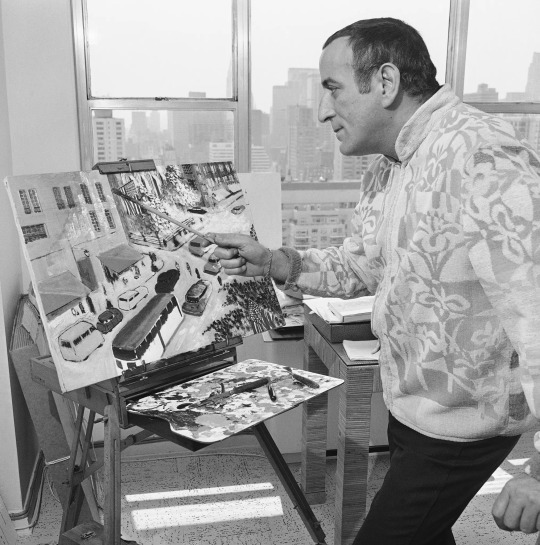
Anthony sang from an early age, and drew and painted, too. He would become a creditable painter as an adult, mostly landscapes and still lifes in watercolors and oils and portraits of musicians he admired, signing his paintings “Benedetto.” His first music teacher arranged for him to sing alongside Mayor Fiorello La Guardia at the opening of the Triborough Bridge (now the Robert F. Kennedy Bridge) in 1936.
For a time he attended the High School for Industrial Arts (now called the High School of Art and Design) in Manhattan, but he never graduated. He dropped out and found work as a copy boy for The Associated Press, in a laundry and as an elevator operator.
“I couldn’t figure out how to get the elevator to stop at the right place,” he recalled. “People ended up having to crawl out between floors.”
At night he performed at amateur shows and worked as a singing waiter. He had just begun to get paying work as a singer, using the stage name Joe Bari, when he was drafted.
He arrived in Europe toward the end of World War II, serving in Germany in the infantry. He spent time on the front lines, an experience he described as “a front-row seat in hell,” and was among the troops who arrived to liberate the prisoners at the Landsberg concentration camp, a subcamp of Dachau.
After Germany surrendered, Mr. Bennett was part of the occupying forces, assigned to special services, where he ended up as a singer with Army bands and for a time was featured in a ragtag version of the musical “On the Town” — directed by Arthur Penn, who would go on to direct “Bonnie and Clyde” and other notable movies — in the opera house in Wiesbaden.

He returned to New York in August 1946 and set about beginning a career as a musician. On the G.I. Bill, he took classes at the American Theater Wing, which he later said helped teach him how to tell a story in song. He sang in nightclubs in Manhattan and Queens.
A series of breaks followed. He appeared on the radio show “Arthur Godfrey’s Talent Scouts,” the “American Idol” of its day. (The competition was won by Rosemary Clooney.) There are different versions of the biggest break in Mr. Bennett’s early career, but as he told it in “The Good Life,” he had been singing occasionally at a club in Greenwich Village where the owner had offered Pearl Bailey a gig as the headliner; she agreed, but only on the condition that Joe Bari stayed on the bill.
When Bob Hope came down to take in Ms. Bailey’s act, he liked Joe Bari so much that he asked him to open for him at the Paramount Theater. Hope had a condition, however: He didn’t like the name Joe Bari, and insisted it be changed. Dismissing the name Anthony Benedetto as too long to fit on a marquee, Hope christened the young singer Tony Bennett.
The Hits Roll In
The producer Mitch Miller signed Mr. Bennett to Columbia Records in 1950; “Boulevard of Broken Dreams” was his first single. Miller was known for his hit-making prowess, a gift that often involved matching talented singers with novelty songs or having them cover hits by others, for which he was criticized by more serious music fans and sometimes by the singers themselves.
He and Mr. Bennett had a contentious relationship. Mr. Bennett resisted his attempts at gimmickry; Miller, who believed that the producer and not the singer was in charge of a recording, applied his authority. Still, together they achieved grand success.
By mid-1951, Mr. Bennett had his first No. 1 hit, “Because of You.” That same year, his version of the Hank Williams ballad “Cold, Cold Heart” also hit No. 1; three years after Williams died in 1953, Mr. Bennett performed it in his honor at the Grand Ole Opry in Nashville.
Other trademark songs followed: “Rags to Riches” in 1953; “Stranger in Paradise,” from the Broadway show “Kismet,” also in 1953; Jule Styne, Betty Comden and Adolph Green’s “Just in Time,” from the show “Bells Are Ringing,” in 1956. That same year, Mr. Bennett was host of his own television variety show, a summer replacement for a similar show that starred another popular Italian American crooner, Perry Como. In 1958, he recorded two albums with the Count Basie band, introducing him to the jazz audience.

In the 1950s, Mr. Bennett toured for the first time, played Las Vegas for the first time and got married for the first time, to Patricia Beech, a fan who had seen him perform in Cleveland. The marriage would flounder in the 1960s, overwhelmed by Mr. Bennett’s perpetual touring, but their two sons would end up playing roles in Mr. Bennett’s career: the older one, D’Andrea, known as Danny, became his father’s manager, and Daegal, known as Dae, became a music producer and recording engineer.
In July 1961, Mr. Bennett was performing in Hot Springs, Ark., and about to head to the West Coast when Ralph Sharon, his longtime pianist, played him a song written by George Cory and Douglass Cross that had been moldering in a drawer for two years. Mr. Sharon and Mr. Bennett decided that it would be perfect for their next date, at the Fairmont Hotel in San Francisco, and it was.
They recorded the song — of course it was “I Left My Heart in San Francisco” — six months later, in January 1962. It won Mr. Bennett his first two Grammys, for best male solo performance and record of the year, and worldwide fame. In “The Good Life,” he wrote that he was often asked if he ever tired of singing it.
“I answer, ‘Do you ever get tired of making love?’” he wrote.
Just five months later, Mr. Bennett performed at Carnegie Hall with Mr. Sharon and a small orchestra. He got sensational reviews — though The Times’s was measured — and the recording of the concert is now considered a classic.
But as the 1960s proceeded and rock ’n’ roll became dominant, Mr. Bennett’s popularity began to slip. In 1969, he succumbed to the pressure of the new president of Columbia Records, Clive Davis, to record his versions of contemporary songs, and the result, “Tony Sings the Great Hits of Today!” — including the Beatles’ “Eleanor Rigby” and “Something” — was a musical calamity, a record that Mr. Bennett would later tell an interviewer made him vomit.
His relationship with Columbia soured further and finally ended, and by the middle of the 1970s Mr. Bennett had formed his own company, Improv Records, on which he recorded the first of two of his most critically admired albums, duets with the jazz pianist Bill Evans. (The second one was released on Evans’s label, Fantasy.) Together the two opened the Newport Jazz Festival, which had moved to New York, at Carnegie Hall in 1976.
Improv went out of business in 1977, and without a recording contract Mr. Bennett relied more and more on Las Vegas, then in decline, for regular work. His mother died that year, and the profligate life he had been living in Beverly Hills caught up with him; the Internal Revenue Service was threatening to take his house. His second marriage, a tumultuous one to the actress Sandra Grant, collapsed — she would later say that she would have been better off if she had married her previous boyfriend, Joe DiMaggio — and he had begun using marijuana and cocaine heavily.

One day in 1979, high and in a panic, he took a bath to calm down and nearly died in the tub. In later years he would play down the seriousness of the event, but he wrote about it in “The Good Life,” describing what he called a near-death experience: “A golden light enveloped me in a warm glow. It was quite peaceful; in fact, I had the sense that I was about to embark on a very compelling journey. But suddenly I was jolted out of the vision. The tub was overflowing and Sandra was standing above me. She’d heard the water running for too long, and when she came in I wasn’t breathing. She pounded on my chest and literally brought me back to life.”
Mr. Bennett turned to his older son for help. Danny Bennett took over the management of his career, aiming to have the American musical standards that were his strength, and his handling of them, perceived as hip by a new generation.
Somewhat surprisingly, the strategy took hold. An article in Spin magazine, which was founded in 1985, declared Mr. Bennett and James Brown as the two foremost influences on rock ’n’ roll, and the magazine followed up with a long, admiring profile.
A Career Revival
Encouraged by executive changes at Columbia Records, Mr. Bennett returned to the Columbia fold in 1985. The next year he released the album “The Art of Excellence.” WBCN in Boston became the first rock station to give it regular airplay. Released in the emerging CD format, it spurred the sales of Mr. Bennett’s back catalog as music fans began replacing their vinyl records with CDs.
In 1993, Mr. Bennett was a presenter, along with two members of the Red Hot Chili Peppers, at MTV’s Video Music Awards. The next year he gave an hourlong performance for MTV’s “Unplugged” series, which included duets with K.D. Lang (with whom he would later tour) and Elvis Costello. The recording of the show won the Grammy for album of the year.
The revival of Mr. Bennett’s career was complete. Not only had he returned to the kind of popularity he had enjoyed 40 years earlier, but he had also been accepted by an entirely new audience.

He recorded albums that honored musicians he admired — Duke Ellington, Louis Armstrong, Frank Sinatra and Billie Holiday — and he collaborated on standards with singers half, or less than half, his age. On the 2006 album “Duets: An American Classic,” he sang “If I Ruled the World” with Ms. Dion, “Smile” with Barbra Streisand and “For Once in My Life” with Stevie Wonder, and revisited his first Columbia single, “Boulevard of Broken Dreams,” with Sting. Five years later, on “Duets II,” his collaborators included Aretha Franklin, Queen Latifah, Willie Nelson and Ms. Winehouse.
As the century changed, he was once again touring, giving up to 200 performances a year, and recording prolifically.
In 2007 Mr. Bennett married a third time, to his longtime companion, Susan Crow, a teacher four decades his junior whom he had met in the late 1980s. Together they started a foundation, Exploring the Arts, that supports arts education in schools, and financed the Frank Sinatra School of the Arts, a public high school in Queens.
Mr. Bennett had lived in the same Manhattan apartment, where he died, for most of his adult life, except for a few years in Los Angeles and London, Ms. Weiner, his publicist, said. He is survived by his wife; his sons, Danny and Dae; his daughters, Johanna and Antonia Bennett; and 9 grandchildren.
If there was a magical quality to Mr. Bennett’s life, as suggested by David Evanier in a glowing 2011 biography, “All the Things You Are: The Life of Tony Bennett,” it is encapsulated by a story Mr. Bennett told to Whitney Balliett in 1974.
“I like the funny things in life that could only happen to me now,” he said. “Once, when I was singing Kurt Weill’s ‘Lost in the Stars’ in the Hollywood Bowl with Basie’s band and Buddy Rich on drums, a shooting star went falling through the sky right over my head and everyone was talking about it, and the next morning the phone rang and it was Ray Charles, who I’d never met, calling from New York. He said, ‘Hey, Tony, how’d you do that, man?’ and hung up.”
7 notes
·
View notes
Text
youtube
10th January 1945 saw the birth of pop star Rod Stewart.
Although born in London Rod’s father was Scottish and he counts himself as a Scot. Stewart performed in several bands in the 1960s including Python Lee Jackson and The Faces. He worked a series of odd jobs, including working as a grave digger, before his singing career took off
Embarking on a solo career, Maggie May became his first hit single in 1971 Stewart moved to the United States in 1975. The next year, he reached the top of the U.S. charts with “Tonight’s the Night” from A Night on the Town. Stewart continued to have a slicker, more pop sound as the decade progressed. He also developed a reputation for his partying lifestyle and for dating numerous actresses and models. With 1978’s Blondes Have More Fun, he had another smash hit single with “Do Ya Think I’m Sexy?”
The 1980s proved to be more challenging for Stewart. While 1981’s Tonight I’m Yours went platinum, the albums that followed did not fare as well. He ended the decade on a positive note, however. His remake of the Tom Waits song “Downtown Train” in 1989 received a lot of radio play. A few years later, he released Unplugged and Seated, which was recorded at an MTV Unplugged concert and featured the hit “Have I Told You Lately.”
With his distinctive throaty, almost scratchy-sounding voice, Stewart decided to take on some of the classic songs and make them his own with It Had to be You: The Great American Songbook. He recorded four volumes of the Great American Songbook series, and won his first Grammy Award (best traditional pop vocal album) for Stardust: The Great American Songbook, Volume III in 2004.
At the age of 60, Stewart became a father for seventh time. His son, Alastair Wallace Stewart, was born on November 27, 2005. This was his first child with then fiancée Penny Lancaster. The couple married in 2007 and welcomed a second son, Aiden, in 2011. He also has a daughter, Kimberly, and a son, Sean, from his first wife Alana Stewart and a daughter named Ruby with former girlfriend Kelly Emberg. Rod also has two children from his marriage to model Rachel Hunter—Renee and Liam. Stewart publicly acknowledged his oldest daughter, Sarah Streeter, in 2013. Streeter was born when Stewart was only 18 years old, and he and the girl’s mother had decided to put their baby up for adoption. Stewart and Streeter first met in 2008.
In 2006, Stewart returned to rock music with Still The Same: Great Rock Classics of Our Time. The album reached the top of the pop charts in October of that year. Stewart put down the microphone and picked up a pen to write his 2012 memoir Rod: The Autobiography. The following year, he made an impressive return to songwriting with his album Time. Stewart co-wrote many of the record’s songs as well as serving as a co-producer on the project.
Although reaching his 77th birthday Rod shows no signs of living a quiet pensioner lifestyle, he and his son were involved with an altercation in Florida, with Rod throwing a punch at a security guard after he refused them entry to an event. He will need to be careful or he might end up being arrested by wife, Penny, who as well as working as a model, has volunteered as a Special Constable in the police.
Rod continues to release music, a new album is due out soon.
Strewart and his family spent the festive season in Scotland at the Gleneagles hotel. The generous singer bSowled over the saff when he decided to offer them £10,000 as a compliment for their hard work over the festive period.
He then jokingly suggested staff should put it to good use and stick every penny of it on Scotland to win the Euros this summer., let's hope we certainly do well!
Stewart, who is due to release a new album next month, said: “I’ve been lucky enough to stay in some of the top hotels in the world and the service at Gleneagles is second to none.
“The staff do a terrific job at a very hectic time of the year and deserve every penny. It’s Scottish hospitality at its very best.”
On his tip, he joked: “I advised the boys and girls at Gleneagles to invest the money wisely – stick the lot on Scotland to win the Euros.”
No matter what you think, nobody can deny his Scottish heritage or love for Scotland
Rod played Edinburgh Castle last year and I love this wee clip that captured the moment his 94 year old sister joined him on stage as he belted out Sailing.
12 notes
·
View notes
Text
drunk, bitter-hearted thoughts re: OFMD cancellation below the cut.
Maybe it’s just that I’ve got terminal mean old bitch disease but describing OFMD as a long-lived fandom is. Unfathomable. To me. It was around for less than two years, y’all.
Yeah parts of it (honestly the hiatus fan content plus the first three episodes of season 2) re-wrote my brain for a while by fulfilling a primal need for an unresolved/unrequited long-term relationship between an unpleasant workaholic and an unhinged, demanding demagogue (Ed/Izzy) to project my emotional breakdown re: work onto—
but, like. It was two seasons. Pretty much a flash in the pan, timescale wise. I have fandoms old enough to drink that have been dead long enough to have a driver’s permit that grab me around the psycho-sexual throat every five years like clockwork.
In the words of the American Songbook, it was great fun, but it was just fun. The reason it was fun is because it was always just bad enough writing to leave gaps that fans could fill. It did some good shit with queer joy, but it was always a show aimed production-wise at a wider audience.
they were never going to commit to the bit in regards to exploring codependency and abuse, or the impacts of coming of age in a violence-oriented homosocial hierarchy in the age of empire. The height of the actual show was a literal fever dream of a mutually assisted suicide scene between two characters who then spend maybe 15 minutes of screen time together following the most dramatic moment of the whole series. It was a show that inherently flinched from actual catharsis because in its heart it can’t allow for real ugliness
OFMD ended for me, personally, when Edward delivered his half-assed non-apology with that stupid bell around his neck. It was a moment of flat-falling attempted comedy that fundamentally undermined every bit of catharsis and pain that came before it. It was also the moment when I realized that the show itself was never going to fulfill the potential of its characters in a direction I could find personally satisfying because, inherently, it’s a show written in the wrong genre to take the characters that direction
I knew in episode five that Izzy hands was going to die. I didn’t anticipate how little it would matter. Him dying with no consequence and less resolution provided me the post-nut clarity to realize I really didn’t like much of Season 2. It didn’t manage to be funny or charming the way Season 1 did. The poly stuff was hollow compared to the revelation that was Jim’s S1 arc. Our pirate queen got to a person for maybe 30 actual minutes in total, between deeply weird and unfunny scenes of Ed and Stede failing to have an arc. The writers have no fucking clue who Ed and Stede want to be when they grow up. S1 was propelled by two men running as fast as possible away from themselves—S2 was propelled by not much of anything, beyond some plot device bullshit with an inherently tired and uninteresting villain.
I do not think season 3 was going to be any better
I hope every cast member in OFMD gets more work than they can say yes to. I can’t say I’m sad it won’t be on a third season of a show that has no idea what it wants to say. Farewell, OFMD. Thanks for the characters. You weren’t around long enough to miss.
6 notes
·
View notes
Text
youtube
December 31, 2015: Lincoln Center's American Songbook series presented Sondheim and Steve Reich in conversation.
2 notes
·
View notes
Text
Happy birthday, Rod Stewart, born on this day in 1945
Happy birthday, Rod Stewart, born on this day in 1945.Best Sheet Music download from our Library.Please, subscribe to our Library.Rod Stewart DiscographyThe Best of Rod Stewart - Rod Stewart Greatest Hits Full Album Soft RockBrowse in the Library:
Happy birthday, Rod Stewart, born on this day in 1945.
Sir Roderick David Stewart (born 10 January 1945), known as Rod Stewart, is a British rock and pop singer and songwriter. Known for his distinctive raspy singing voice, Rod Stewart is among the best-selling music artists of all time, having sold more than 120 million records worldwide. His music career began in 1962 when he took up busking with a harmonica. In 1963, he joined the Dimensions as a harmonica player and vocalist. In 1964, Rod Stewart joined Long John Baldry and the All Stars before moving to the Jeff Beck Group in 1967. Joining Faces in 1969, he also launched a solo career, releasing his debut album, An Old Raincoat Won't Ever Let You Down, that year. Rod Stewart's early albums were a fusion of rock, folk music, soul music, and R&B. His third album, 1971's Every Picture Tells a Story, was his breakthrough, topping the charts in the UK, US, Canada and Australia, as did its ballad "Maggie May". His 1972 follow-up album, Never a Dull Moment, also reached number one in the UK and Australia, while going top three in the US and Canada. Its single, "You Wear It Well", topped the chart in the UK and was a moderate hit elsewhere. After Stewart had a handful more UK top-ten hits, Faces broke up in 1975. Stewart's next few hit singles were ballads, with "Sailing", off the 1975 UK and Australian number-one album, Atlantic Crossing, becoming a hit in the UK and the Netherlands (number one), Germany (number four) and other countries, but barely charting in North America. A Night on the Town (1976), his fifth straight chart-topper in the UK, began a three-album run of going number one or top three in the US, Canada, the UK and Australia with each release. That album's "Tonight's the Night (Gonna Be Alright)" spent almost two months at number one in the US and Canada, and made the top five in other countries. Foot Loose & Fancy Free (1977) contained the hit "You're in My Heart (The Final Acclaim)" as well as the rocker "Hot Legs". Blondes Have More Fun (1978) and its disco-tinged "Da Ya Think I'm Sexy" both went to number one in Canada, Australia and the US, with "Da Ya Think I'm Sexy" also hitting number one in the UK and the top ten in other countries. Stewart's albums regularly hit the upper rungs of the charts in the Netherlands throughout the '70s and in Sweden from 1975 onward. After a disco and new wave period in the late 1970s and early 1980s, Stewart's music turned to a soft rock/middle-of-the-road style, with most of his albums reaching the top ten in the UK, Germany and Sweden, but faring less well in the US. The single "Rhythm of My Heart" was a top five hit in the UK, US and other countries, with its source album, 1991's Vagabond Heart, becoming, at number ten in the US and number two in the UK, his highest-charting album in a decade. In 1993, he collaborated with Bryan Adams and Sting on the power ballad "All for Love", which went to number one in many countries. In the early 2000s, he released a series of successful albums interpreting the Great American Songbook. In 2008, Billboard magazine ranked Rod Stewart the 17th most successful artist on the "Billboard Hot 100 All-Time Top Artists". A Grammy and Brit Award recipient, he was voted at No. 33 in Q Magazine's list of the Top 100 Greatest Singers of all time. As a solo artist, Rod Stewart was inducted into the US Rock and Roll Hall of Fame in 1994, the UK Music Hall of Fame in 2006, and he was inducted a second time into the Rock and Roll Hall of Fame in 2012 as a member of Faces. He has had 10 number-one albums and 31 top-ten singles in the UK, six of which reached number one. Rod Stewart has had 16 top-ten singles in the US, with four reaching number one on the Billboard Hot 100. He was knighted in the 2016 Birthday Honours for services to music and charity. Rod Stewart Discography Main article on Wikipedia: Rod Stewart discography Studio albums An Old Raincoat Won't Ever Let You Down (1969) Gasoline Alley (1970) Every Picture Tells a Story (1971) Never a Dull Moment (1972) Smiler (1974) Atlantic Crossing (1975) A Night on the Town (1976) Foot Loose & Fancy Free (1977) Blondes Have More Fun (1978) Foolish Behaviour (1980) Tonight I'm Yours (1981) Body Wishes (1983) Camouflage (1984) Every Beat of My Heart (1986) Out of Order (1988) Vagabond Heart (1991) A Spanner in the Works (1995) When We Were the New Boys (1998) Human (2001) It Had to Be You: The Great American Songbook (2002) As Time Goes By: The Great American Songbook, Volume II (2003) Stardust: The Great American Songbook, Volume III (2004) Thanks for the Memory: The Great American Songbook, Volume IV (2005) Still the Same... Great Rock Classics of Our Time (2006) Soulbook (2009) Once in a Blue Moon: The Lost Album (2010) Fly Me to the Moon... The Great American Songbook Volume V (2010) Merry Christmas, Baby (2012) Time (2013) Another Country (2015) Blood Red Roses (2018) The Tears of Hercules (2021) Swing Fever (with Jools Holland) (2024)
The Best of Rod Stewart - Rod Stewart Greatest Hits Full Album Soft Rock
https://www.youtube.com/watch?v=ev38apGdrkI Read the full article
#SMLPDF#noten#partitura#sheetmusicdownload#sheetmusicscoredownloadpartiturapartitionspartitinoten楽譜망할음악ноты#spartiti
0 notes
Text

Rod Stewart: Rod: The Autobiography (2013)
We've all "broken up" with Rod Stewart a few times over the years, but I think most of us eventually "made up" again ... how can one resist?
Though he drove even his most loyal fans up the wall with his pop singles of the late '70s and early '80s, Stewart's preceding body of work with the Jeff Beck Group, the Faces, and via solo albums like Gasoline Alley, Every Picture Tells a Story, and Never a Dull Moment has few comparisons in classic rock.
And when you read his autobiography, simply named Rod (no 'Mod'), one of the things that stands out most is his uncharacteristically happy childhood (for a rock star) and how that's reflected in his uncharacteristically fun-loving attitude (for a rock star) through the years.
Yes, even Rod has had his fair share of heartache and trouble, mostly involving fellow rock stars of a more pessimistic nature and all those blonde wives, on which he focuses the second half of these memoirs, as his music grew less vital (albeit still wildly popular for those who could stomach his reinvention through the Great American Songbook series).
But of course, no matter how painful our temporary break-ups, Stewart's winning, conciliatory argument -- the one that always seems to draw estranged fans back to him -- is that one-of-a-kind voice.
Well, that and his god-given talent, good fortune, and positivity (never think the last two aren't somehow related), which remind us not to take it all so damn seriously and have some fun, because it's only rock 'n' roll, after all.
Featured Records:
Rod Stewart: Every Picture Tells a Story (1971)
Faces: A Nod Is As Good As a Wink … to a Blind Horse (1971)
Jeff Beck Group: Beck-Ola (1969)
Buy from: Amazon
#rod stewart#jeff beck group#jeff beck#faces#ron wood#ronnie lane#small faces#classic rock#the rolling stones#rod the mod
1 note
·
View note